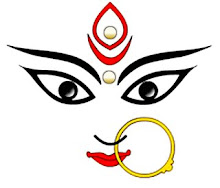'Tiruppavai' composed by Andal is a very beautiful collection of poems which women and unmarried girls read /sing during the Margazhi masam. Andal prays to Lord Krishna in a variety of ways and calls her fellow devotees to worship.
Tiruppavai belongs to the Pavai genre of songs, a uniquely Tamil tradition sung in the context of the Pavai vow observed throughout the month of Margazhi, originally by unmarried girls praying to the Pavai goddess [related to Parvati] for a blissful married life.
Tirupavai is a composition of 30 songs, said to have been sung by Andal, in Sri Rangam. It is a work which even today is sung by girls of marriageable age, by waking early in the morning and then proceeding to Kaveri river for a early morning bath, whereafter, the girls go to the temple of Narayana, in Sri Rangam, for prayers.
It is similar to Tiruvembavai of Manikkavachagar which was sung in Tiruvannamalai.
Sri Vaishnavas sing these stanzas every day of the year in the temple as well as in their homes. This practice assumes special significance during Margazhi: each day of this month gets its name from one of the thirty verses. There are references to this vow in the late-sangam era Tamil musical anthology Paripadal.
Andal also known as Nachiar and also as Kodhai, was the daughter of Vishnu Chitta alias Nammazhwar of Srivilliputtur. She is one of the most important saints of Sri Vaishnavism.
At an early age she well in love with Lord Krishna and because she used to wear the garlands meant for the deity before it is worn by the God, she was also called Chudi Kodutha Chudar Kodi. People believed that she was an avathara [incarnation] of Bhooma Devi. At the end of her life she left her ethereal body and mingled with her Lord.
*******************************
maargazhi thingaL
maargazhith thingaL madhi niRaindha nannaaLaal * neeraadap pOdhuveer pOdhuminO nErizhaiyeer * seer malgum aayppaadic celvac ciRumeergaaL * koorvER kodunthozhilan nandhagOpan kumaran * Eraarndha kaNNi yasOdhai iLaNYsingam * kaar mEnic cengaN kadhir madhiyam pOl mugaththaan * naaraayaNanE namakkE paRai tharuvaan * paarOr pugazhap padindhElOr embaavaay.
******************************
Thiruppavai extols the virtues of Lord Krishna and requests him for help and guidance in the worship of Goddess Pavai. The worship of this Goddess was very common in Tamil Nadu since ancient times. As said, the worship was done by unmarried girls. They all used to take bath in the rivers daily early in the dawn, in the month of Margazhi [December-January] and worship the goddess by dance and music and observe very strict penance during the day.This it was believed would get them good husbands and would lead to a very happy married life. On each day one of the hymns are being sung during this month even today.
Besides chanting of the Tiruppavai of Andal, another major highlight in the month is the drawing of kolams [Rangoli] daily in front of houses.
The most important festivals in the Margazhi month are Vaikundha Ekadasi, Hanuman Jayanthi and Arudara Darshan. The month also marks the end of the pilgrimage season in Sabarimala.
During Arudara Darshan[Thiruvadirai Festival], a special recipe called "Thiruvadirai Kazhli" is offered to Lord Shiva. On Mukkodi Ekadasi day, Lord Vishnu is offered " Sorgavasal Thirappu".
For the Recipe for "Thiruvadirai Kazhli" ...you may click on the link below:
http://lrsrecipecorner.
To get to know more on Sri Andal, you may read my earlier Posting by clicking the Link below:
http://divyadarisanams.blogspot.com/2010/12/blog-post_25.html
The month is also of great significance in the Srirangam Sri Ranganatha Temple. Apart from the Vaikunta Ekadasi, the Srirangam temple during the month witnesses the Pagal pathu and Rapathu – the chanting of Tiruvaimozhi.
Margazhi Masam is also the time of the winter solstice when the days are shorter and the nights are longer. This Margazhi month has another speciality also. This month is considered and should be considered as the divine and highly spiritual month because in all the other months, there are lots of festivals and happy occasions fall. The main reason why there are no festivals in this month is mainly because of mind and soul should completely think only towards the perumal and this is the only month in which all the 30 days should be dedication towards the Perumal.
MARGAZHI.....Another very special season dedicated to Music....
While nothing can equal the excitement of sabha hopping - from attending those valuable lec-dems at Music Academy in the morning, the free junior concerts in the afternoon and to culminate a perfect day with a ticketed concert of an established artiste in the evening, with some rava khichadi, kasi halwa and filter kaapi at the sabha canteens....!
Even the unrelenting Madras sun seems to take a break in December - such is the magic of Margazhi
There is also a scientific meaning, which explains the greatness of the Margazhi month. During this month, the ozone layer will be lowered a little bit and because of this, any disease will reduce and gives a healthy body.
- Ladies will attain a good husband who fasts during this month.
- Since, this month's main Naamam is Sri Kesavan, by chanting this Naamam will lead us to great position.
- Best to visit any Shivan temples during Thiruvadhirai [Aarudhra].
- By putting kolam infront of our house will greet Sri Maha Lakshmi into our house.
Get drenched in Bhakthi and Devotion this Margazhi Season...!!!






























































